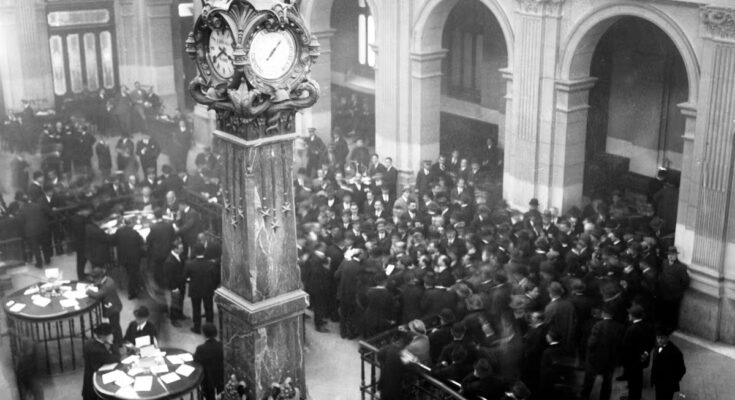This week the Ibex 35 has been on everyone’s lips. The main indicator of the Spanish stock market reached historic highs after exceeding 16,000 points, driven above all by the prices of the banking sector. Stocks are a risky asset and, as such, are subject to fluctuations and volatility. However, when a saver asks a financial advisor where to invest his money, the same litany is repeated: in the long term, stocks usually outperform other assets. Is this statement true?
Three professors from Spanish universities, Stefano Battilossi and Stefan Houpt, from Carlos III, and Miguel Artola Blanco, from the Autonomous University, confirm this theory. In a study published by The review of economic history analyzed the profitability achieved by the Ibex 35 in the period 1900-2020. This work, reported exclusively by EL PAÍS, is the first to analyze the behavior of Spanish securities over such a long period.
The main conclusion is that Spanish stocks generated a real return (adjusted for inflation) of 3% per year. The average annual return in nominal terms (without taking into account the increase in the cost of living) was 8.3%. “This is a real profitability significantly lower than the 4-6% observed in the markets of other advanced economies in this period, due, above all, to the severe losses that occurred during the periods of (civil) war, autarky and inflationary crisis of the 70s and 80s of the last century,” the authors acknowledge. Dividends contributed 56% to total returns, and taxes would subtract an average of 0.5 percentage points per year (8.3% to 7.8%).
However, after economic liberalization, macroeconomic stabilization and integration into the European Union, Spanish market returns have increased significantly to around 8% and stock volatility has decreased. The study highlights how the evolution of the stock market has been a mirror of the country’s economic modernization “showing how institutional strength and stability are fundamental to the long-term success of investments”.
To the results obtained by the three academics, which reach up to 2020, the investor should add how much the main indicator of the stock market has risen in the last four years. Specifically, the Ibex 35 has seen a revaluation of more than 90% since January 2021.
The authors created an original index, the H-Ibex (from the historical Ibex), which covered the Spanish stock market from 1900 to 1987, then linking it to the current Ibex 35 (which has officially existed since 1992 and is calculated retroactively to 1987). The index was based exclusively on the ordinary shares of the largest companies incorporated in Spain, weighted by market capitalization and adjusted for capital transactions, such as stock splits, new issues and subscription rights. The number of companies that were part of the H-Ibex was as follows: At the beginning of the 20th century the index had about 10 companies.
In the 1930s it included 34 listed companies and by 1940 the number was set at 35 companies.
These three economists also analyzed whether the Spanish stock market behaved as a leading indicator of economic performance, i.e. whether stock prices rose before periods of expansion and whether they fell before recessions.
Stock prices were highly procyclical in the “Roaring Twenties,” after the end of post-war autarky (1950-1974) and during growth driven by European integration (1985-2008). On the other hand, they experienced slow or even negative growth during the Great Depression, the stagflation of the 1970s and 1980s, and the Great Recession following the 2008-2012 bank debt crisis.
Civil war
A noteworthy aspect of the study is that, despite the 31.6% contraction Spain’s GDP suffered during the three-year civil war, the impact of the war on stock performance was “surprisingly moderate if we compare it with other major crises that occurred during the 20th century.”
From a broader perspective, the authors link their findings to the narrative described in the book The Triumph of the Optimists (Dimson, Marsh, & Staunton, 2002): despite long periods of poor performance, patient investors who held onto their stocks throughout Spain’s institutional and economic modernization ended up prospering. “The historical lesson is clear: institutional solidity, macroeconomic discipline and openness to international capital are the pillars of sustained growth in stocks and investor confidence,” they conclude.



